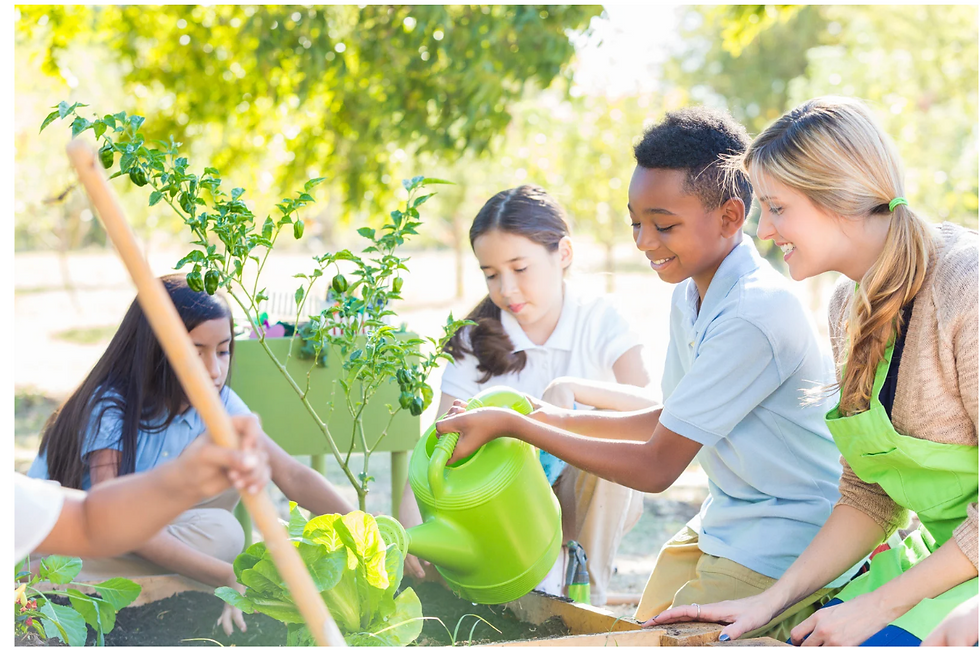How to Support ESL Students in the Science Classroom
- Evans Kofi Amoah
- Apr 18
- 3 min read
Updated: Apr 19
One of the challenges science teachers face is having students whose first language isn’t English in our class. These ESL (English as a Second Language) students find it difficult to adapt to life in their new country. They struggle to keep pace with their native peers, especially in a content-based classroom like science.

How you go about supporting them in our classroom matters. Using the right teaching strategies can improve their learning experience, boost their confidence, and even help them thrive in your classroom. Below are a few ideas that have worked well in my class over the years.
Use Visuals
It is often said, “A picture is worth a thousand words”. This saying captures the importance of including lots of visuals in your lessons if you have an ESL student in your classroom. These types of students often have limited vocabulary to understand long explanations. The complex terminology in science also doesn’t help. Even some native speakers struggle to remember words like bronchus, corpus luteum, capacitor, etc., that students are required to master in the science classroom.
To make it easier for my ESL students to comprehend my lessons, I heavily rely on visuals to get my point across instead of making long-winded speeches. Examples of visuals I use include:
a. Images
b. videos
c. charts
d. real objects
e. real specimens
f. drawings
Use Hands-on Activities
Very few activities have the twin benefit of keeping students engaged while improving their memory. Hands-on activities make this feat possible. Research has shown that when students learn by doing, they are more likely to remember what they learned. Your ESL students (and native students) will benefit hugely in this regard. For example, instead of showing pictures of the three types of tectonic plate boundaries, I ask my ESL students to build a clay model of each. Then, they demonstrate how each boundary happens and discuss the effects.
Another benefit of hands-on activity is that my ESL students have enough time to process the language they will use to describe the concept they are learning. They don’t feel pressured to speak their ideas in the moment. To find hands-on activities, I recommend going to www.pinterest.com, www.google.com, or www.youtube.com. You may find lots of helpful ideas there to start with.
ESL students displaying a clay model of... a) the digestive system of an insect. b) human embryonic development stages c) the animal cell
Use Group Activities
Many of our students, especially the ESL type, try hard to avoid the spotlight. This is understandable because they lack the language to express themselves. Although individual work plays a vital role in the science classroom, group work enables students to extract ideas from their peers in a supportive way. Another way group activities benefit ESL students is that they don’t feel the pressure to come up with all the answers. Members of the team can collaborate to create a final idea.
One of my favorite group activities is asking students to role-play the life cycle of an organism. It’s always fun to watch how ESL students come out of their shells during such activities. Also, I love asking students to create clay models, especially about the body systems. When finished, they label each part and present their models to me. Here is a list of my top group activities:
a. role plays
b. building models with clay
c. building prototypes
d. engineering activities
e. debates
f. expert meeting activity
ESL students building... a) a prototype of a bird nest. b) a marshmallow and toothpick tower that can withstand an earthquake.
I am sure there are many more strategies teachers can use to support ESL students in our science classrooms, but I feel these are enough for anyone to start with. These ideas will benefit both your native speakers and ESL students. I have witnessed the huge impact they’ve had on my students over the years. I cannot speak highly of them enough. I urge you to try out some of them in your classroom. I wish you and your class a fun-filled lesson!
Do you have ESL students in your science or content-based classroom? What strategies do you use to support them? Share your insights in the comment section.














Comentários